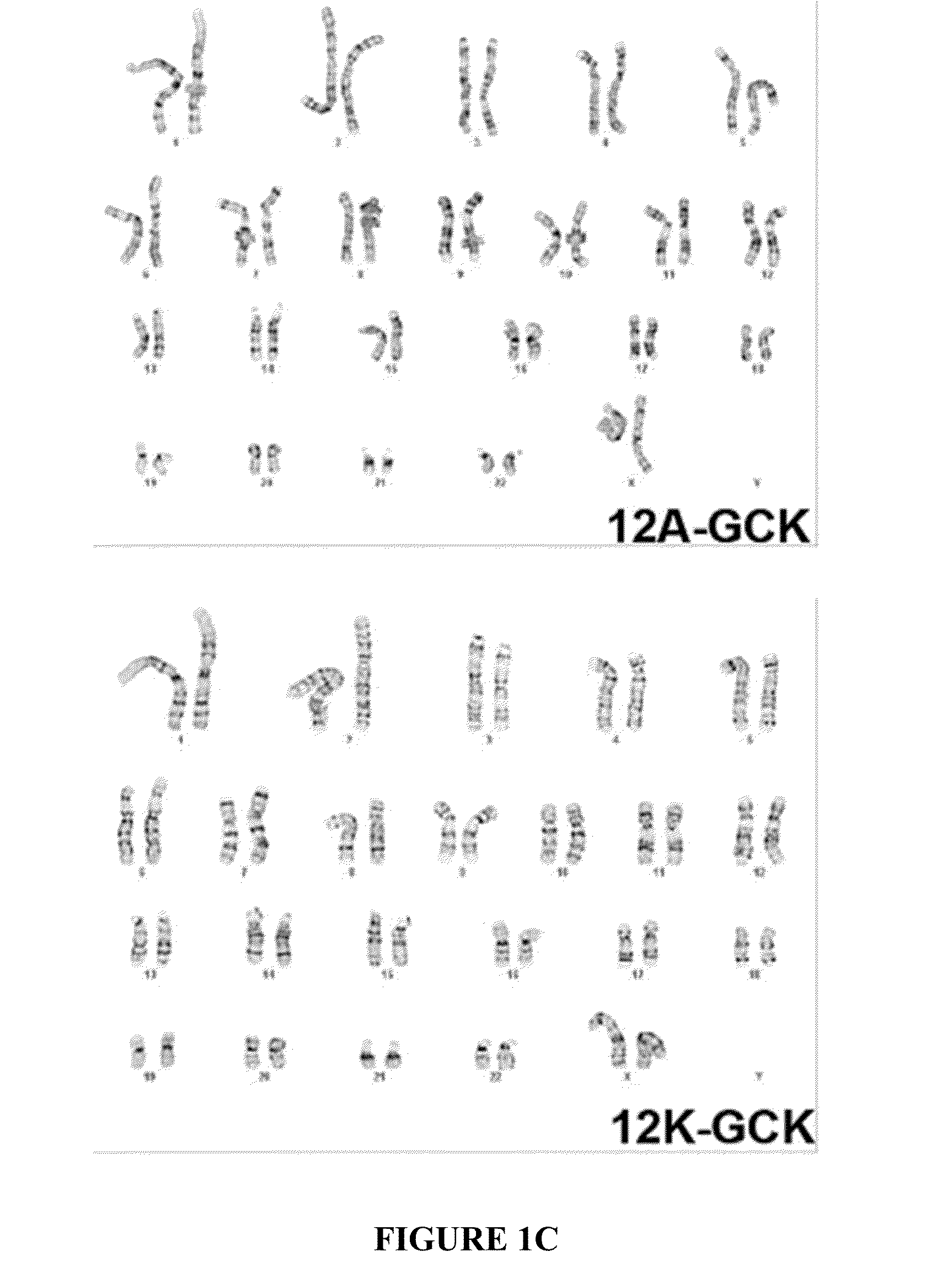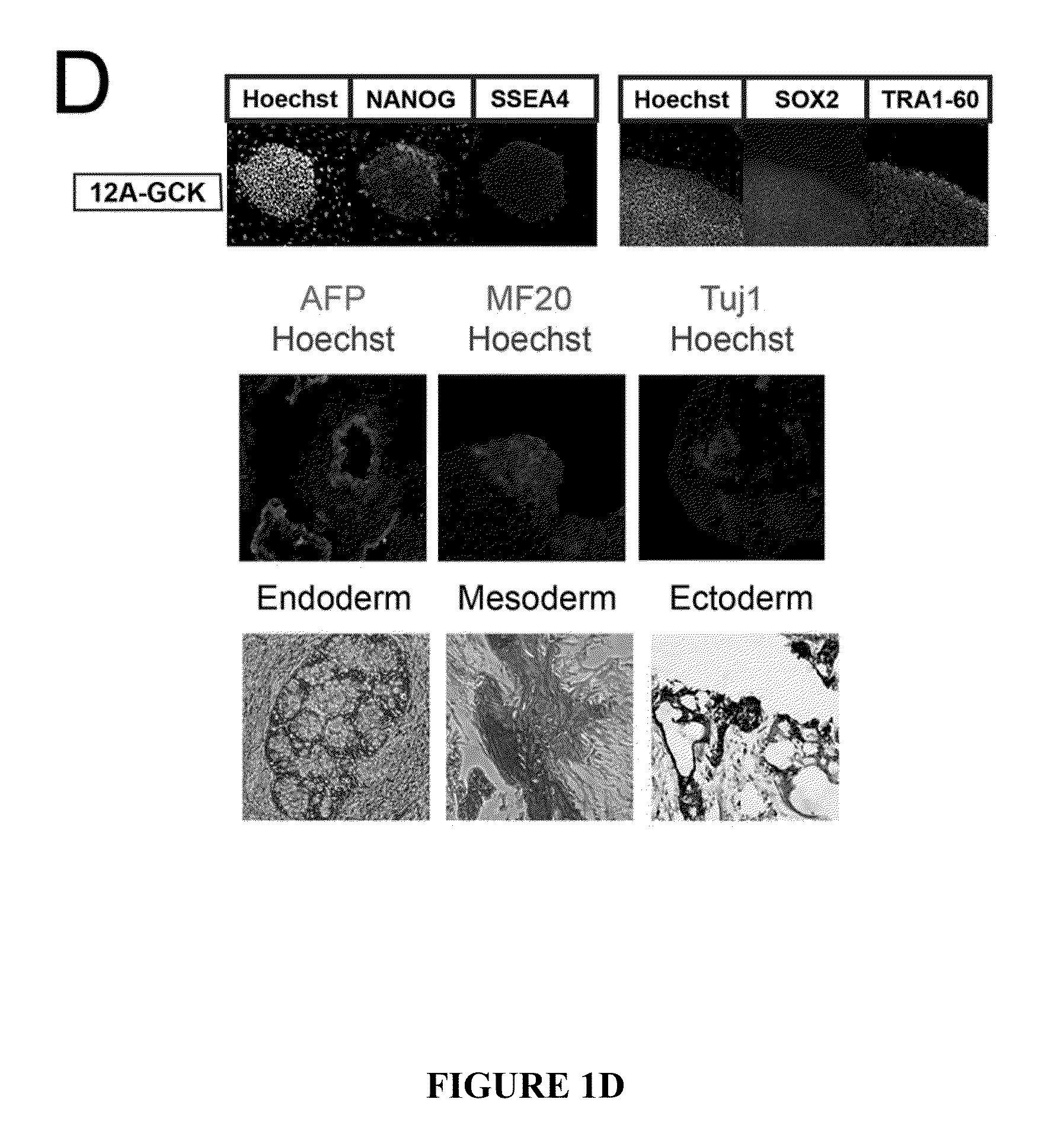Method for generating beta cells
a technology of beta cells and cells, applied in the field of generating beta cells, can solve the problem of limited access to affected human beta cells
- Summary
- Abstract
- Description
- Claims
- Application Information
AI Technical Summary
Benefits of technology
Problems solved by technology
Method used
Image
Examples
example 1
Production of Insulin Producing Cells
[0166]The protocol for producing insulin producing cells is as follows:
[0167]Human embryonic stem cells or induced pluripotent stem cells are cultured under standard procedures and conditions that are known in the art. Prior to differentiation, cells are detached and dissociated using Dispase (3-5 mM @ RT) and, subsequently, Accutase (3-5 mM @ RT). Cells are suspended in human ES medium with ROCK inhibitor (Y27632) and filtered through 70 um (or 100 um) cell strainer. After that, cells are seeded a density of 400,000-800,000 cells / well (6-well plate) or 200,000-400,000 cell / well (12-well plate) or 50,000-200,000 cell / well (24-well plate) or 25,000-50,000 cell / well (96-well). Cells are kept grown for 1 or 2 days (the culture should be confluent).
[0168]On Day 1, cells are washed once with RPMI medium (with 1× Pen-Strep, 1× Glutamax). Then cells are cultured in RPMI medium (with 1× Pen-Strep, 1× Glutamax) containing human Activin A protein (100 ng / m...
example 2
Characterization of Insulin Producing Cell Functionality
[0175]The disclosure provides a method to characterize the functionality of above mentioned insulin-producing pancreatic cells by measuring insulin secretion in response to stimuli including glucose and potassium. Insulin-producing cells are washed in CMRL medium containing 5.6 mM glucose for one hour. Then cells are incubated in CMRL medium with 5.6 mM glucose for one hour and the medium is collected. Then, cells are incubated in CMRL medium containing 16.9 mM glucose or 35 mM potassium for one hour and the medium is collect. The levels of human c-peptide in the media are measured as indicator of insulin secretion.
example 3
Transplantation of Pancreatic Progenitor Cells
[0176]The disclosure provides a method to transplant abovementioned pancreatic progenitor cells into mice. Insulin-producing cells are digested by trypsin and suspended in CMRL medium for 12-24 hours. The cells are collected and 2×106 cells are transplanted under the kidney capsule of one NSG mouse.
PUM
| Property | Measurement | Unit |
|---|---|---|
| concentration | aaaaa | aaaaa |
| concentration | aaaaa | aaaaa |
| concentration | aaaaa | aaaaa |
Abstract
Description
Claims
Application Information
 Login to View More
Login to View More - R&D
- Intellectual Property
- Life Sciences
- Materials
- Tech Scout
- Unparalleled Data Quality
- Higher Quality Content
- 60% Fewer Hallucinations
Browse by: Latest US Patents, China's latest patents, Technical Efficacy Thesaurus, Application Domain, Technology Topic, Popular Technical Reports.
© 2025 PatSnap. All rights reserved.Legal|Privacy policy|Modern Slavery Act Transparency Statement|Sitemap|About US| Contact US: help@patsnap.com



